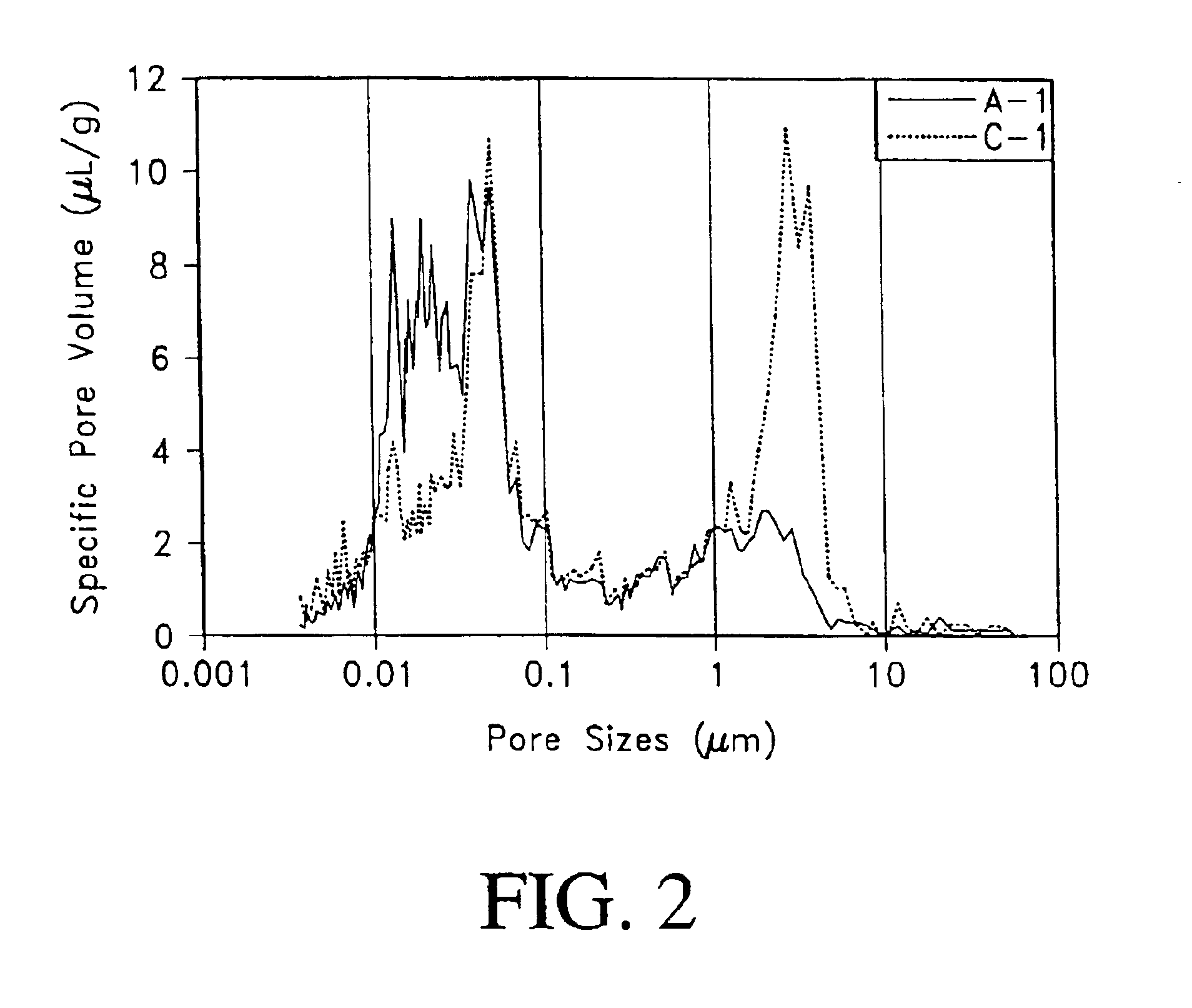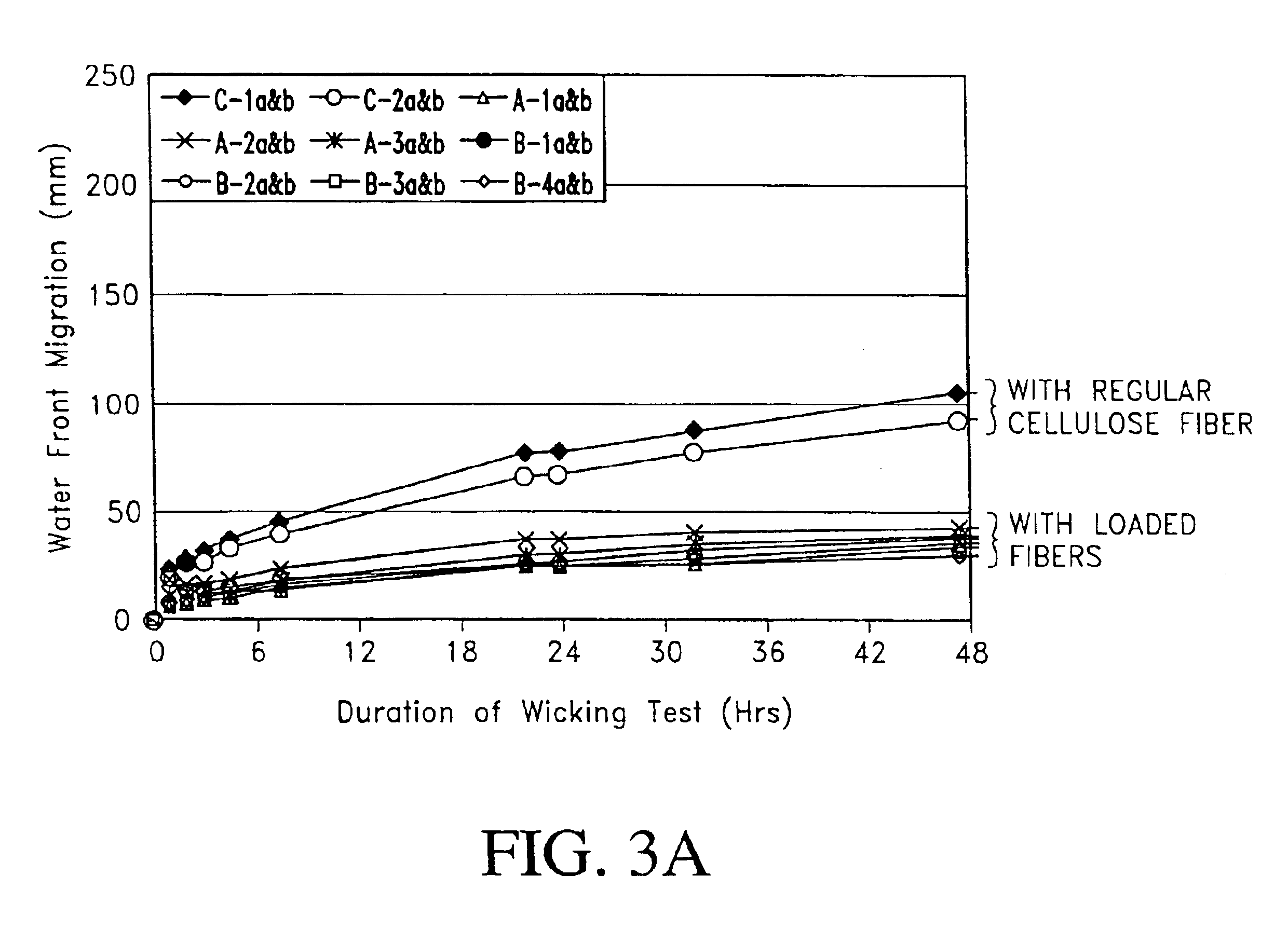Fiber cement composite materials using cellulose fibers loaded with inorganic and/or organic substances
- Summary
- Abstract
- Description
- Claims
- Application Information
AI Technical Summary
Benefits of technology
Problems solved by technology
Method used
Image
Examples
Embodiment Construction
The preferred embodiments of the present invention describe the use of filled or loaded cellulose fibers in cementitious fiber reinforced composite materials. These embodiments encompass not only the composite materials formed with loaded fibers, but also the formulation and the methods of manufacture of the composite materials.
The loaded fibers may be used in conjunction with other fiber treatments which further improve the water resistance or other properties of fiber reinforced cement materials. Further details on related chemical treatments of fibers, particularly treating the individualized cellulose fibers, in order to improve the resistance of the resulting building material to water and / or environmental degradation, are found in Applicant's copending applications entitled FIBER CEMENT COMPOSITE MATERIALS USING SIZED CELLULOSE FIBERS, Ser. No. 09 / 969,742, filed Oct. 2, 2001; FIBER CEMENT COMPOSITE MATERIALS USING BIOCIDE TREATED DURABLE CELLULOSE FIBERS, Ser. No. 09 / 969,964, ...
PUM
| Property | Measurement | Unit |
|---|---|---|
| Temperature | aaaaa | aaaaa |
| Fraction | aaaaa | aaaaa |
| Fraction | aaaaa | aaaaa |
Abstract
Description
Claims
Application Information
 Login to View More
Login to View More - R&D
- Intellectual Property
- Life Sciences
- Materials
- Tech Scout
- Unparalleled Data Quality
- Higher Quality Content
- 60% Fewer Hallucinations
Browse by: Latest US Patents, China's latest patents, Technical Efficacy Thesaurus, Application Domain, Technology Topic, Popular Technical Reports.
© 2025 PatSnap. All rights reserved.Legal|Privacy policy|Modern Slavery Act Transparency Statement|Sitemap|About US| Contact US: help@patsnap.com



